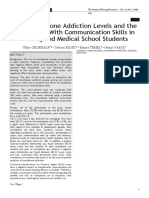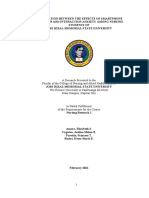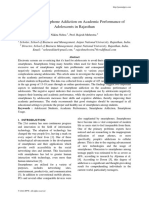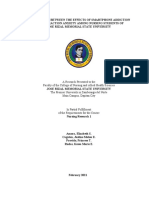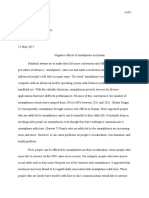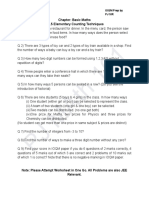0% found this document useful (0 votes)
37 views6 pagesDifferent Topics
The article discusses smartphone addiction as a growing behavioral addiction, particularly among adolescents, and examines its risk factors, consequences, and potential solutions. Despite the lack of formal recognition in diagnostic manuals, research indicates significant negative impacts on mental health and social functioning due to excessive smartphone use. Recommendations include promoting digital literacy, parental monitoring, and establishing healthy usage habits to mitigate addiction risks.
Uploaded by
gruffnewsCopyright
© © All Rights Reserved
We take content rights seriously. If you suspect this is your content, claim it here.
Available Formats
Download as PDF, TXT or read online on Scribd
0% found this document useful (0 votes)
37 views6 pagesDifferent Topics
The article discusses smartphone addiction as a growing behavioral addiction, particularly among adolescents, and examines its risk factors, consequences, and potential solutions. Despite the lack of formal recognition in diagnostic manuals, research indicates significant negative impacts on mental health and social functioning due to excessive smartphone use. Recommendations include promoting digital literacy, parental monitoring, and establishing healthy usage habits to mitigate addiction risks.
Uploaded by
gruffnewsCopyright
© © All Rights Reserved
We take content rights seriously. If you suspect this is your content, claim it here.
Available Formats
Download as PDF, TXT or read online on Scribd
/ 6







